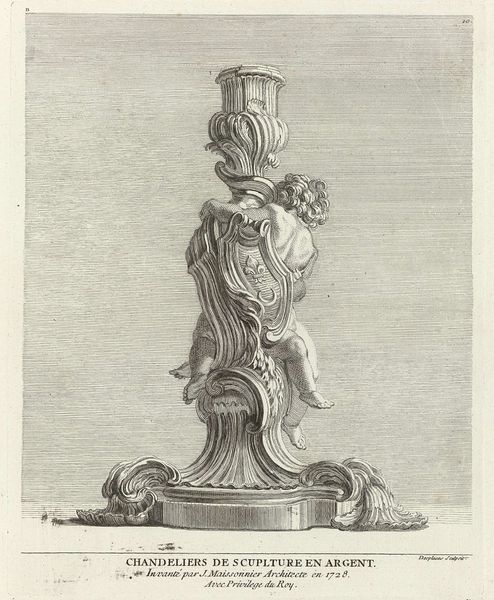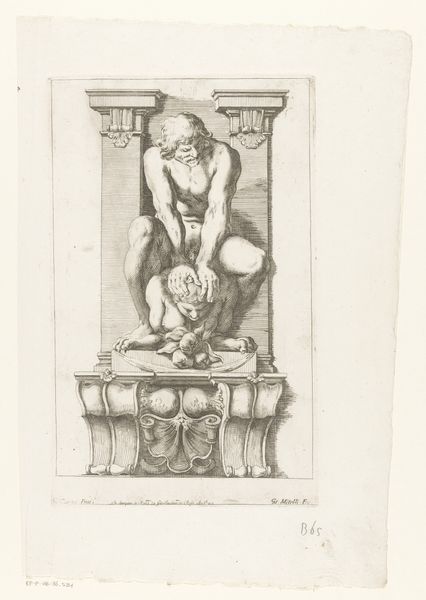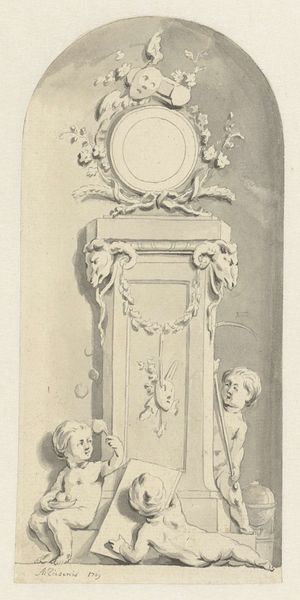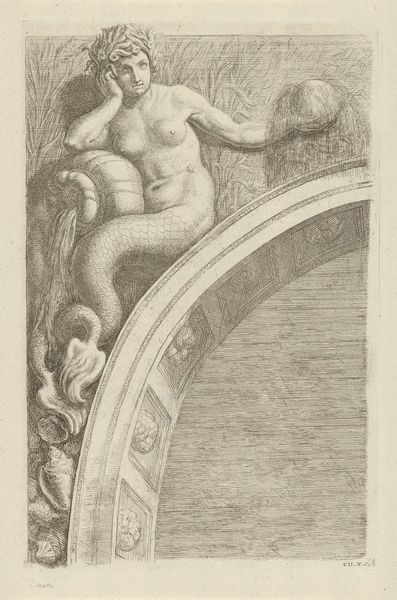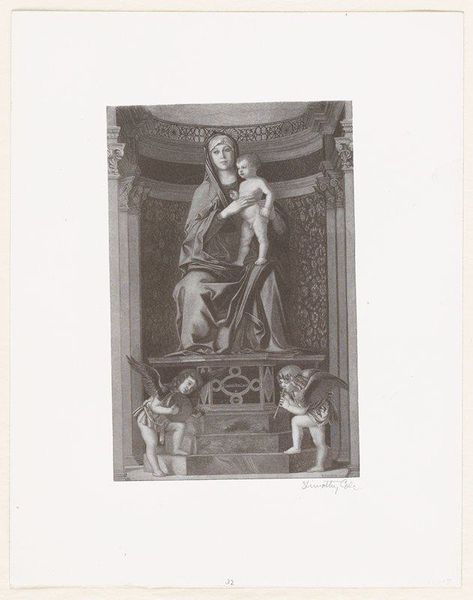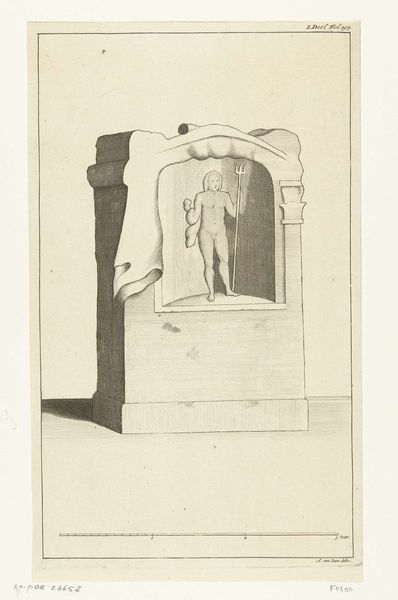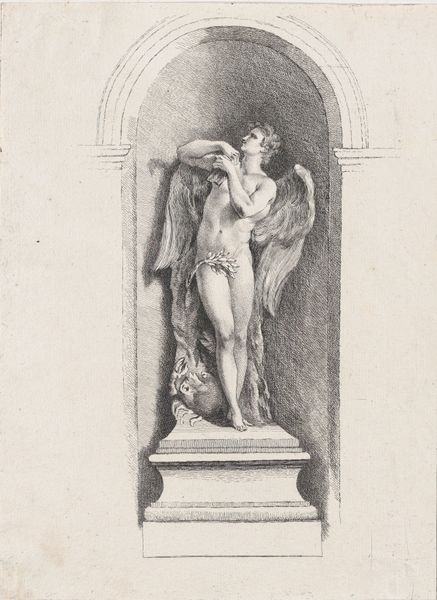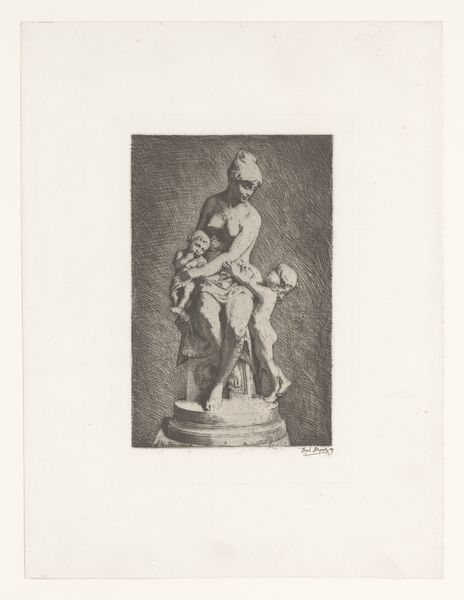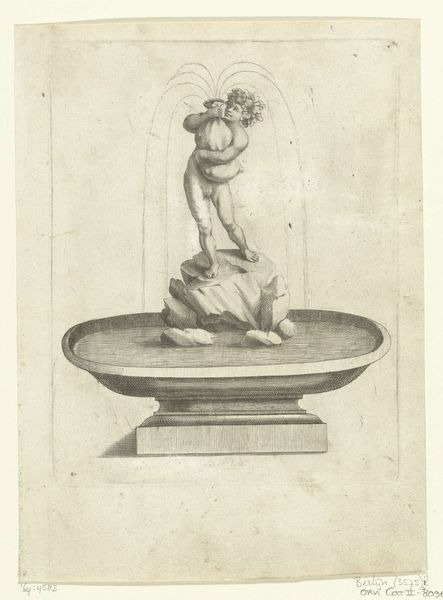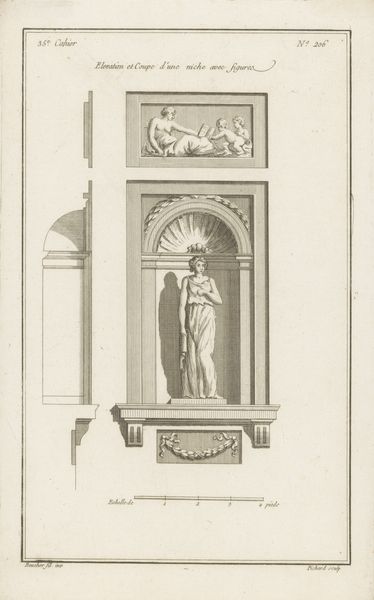
drawing, sculpture, graphite, engraving
#
portrait
#
drawing
#
neoclacissism
#
classical-realism
#
figuration
#
form
#
sculpture
#
line
#
graphite
#
engraving
Dimensions: height 272 mm, width 195 mm
Copyright: Rijks Museum: Open Domain
Editor: This is a drawing by Jacobus Millies, made sometime between 1777 and 1813, called "Statue of a Winged Woman." It appears to be graphite on paper, a study of a fragmented sculpture. It has a melancholic feeling. What's your take on it? Curator: Consider the engraver's role here. Millies wasn’t just copying; he was actively mediating this sculptural form for wider consumption through print. How does the material of the engraving—the incised lines, the paper itself—affect our perception of the original statue’s intended grandeur and permanence? Editor: That's interesting, I hadn’t considered the printmaking aspect itself as a form of interpretation! I was so focused on it representing a sculpture. Curator: Think about the social context too. Neoclassicism was more than just aesthetics; it was deeply entwined with Enlightenment ideals and aspirations of Republicanism and democracy. How might this seemingly simple study participate in disseminating and idealizing classical forms for a broader public, potentially shaping cultural and political attitudes of the time? Editor: So, it’s less about the brokenness, and more about how the artwork served to communicate classical ideals through mass production to a new audience. That makes the emphasis on line and form make more sense! Curator: Precisely. And look at the skill involved. Every line carefully placed, simulating texture, light, shadow… The labor that went into creating this relatively accessible piece speaks volumes about the value placed on craft and dissemination of knowledge at the time. Editor: It reframes how I see drawings in general. Curator: Indeed. Shifting focus from "art" to "artefact" transforms our reading entirely. Editor: That's definitely a new way for me to understand Neoclassical works. Thanks!
Comments
No comments
Be the first to comment and join the conversation on the ultimate creative platform.
